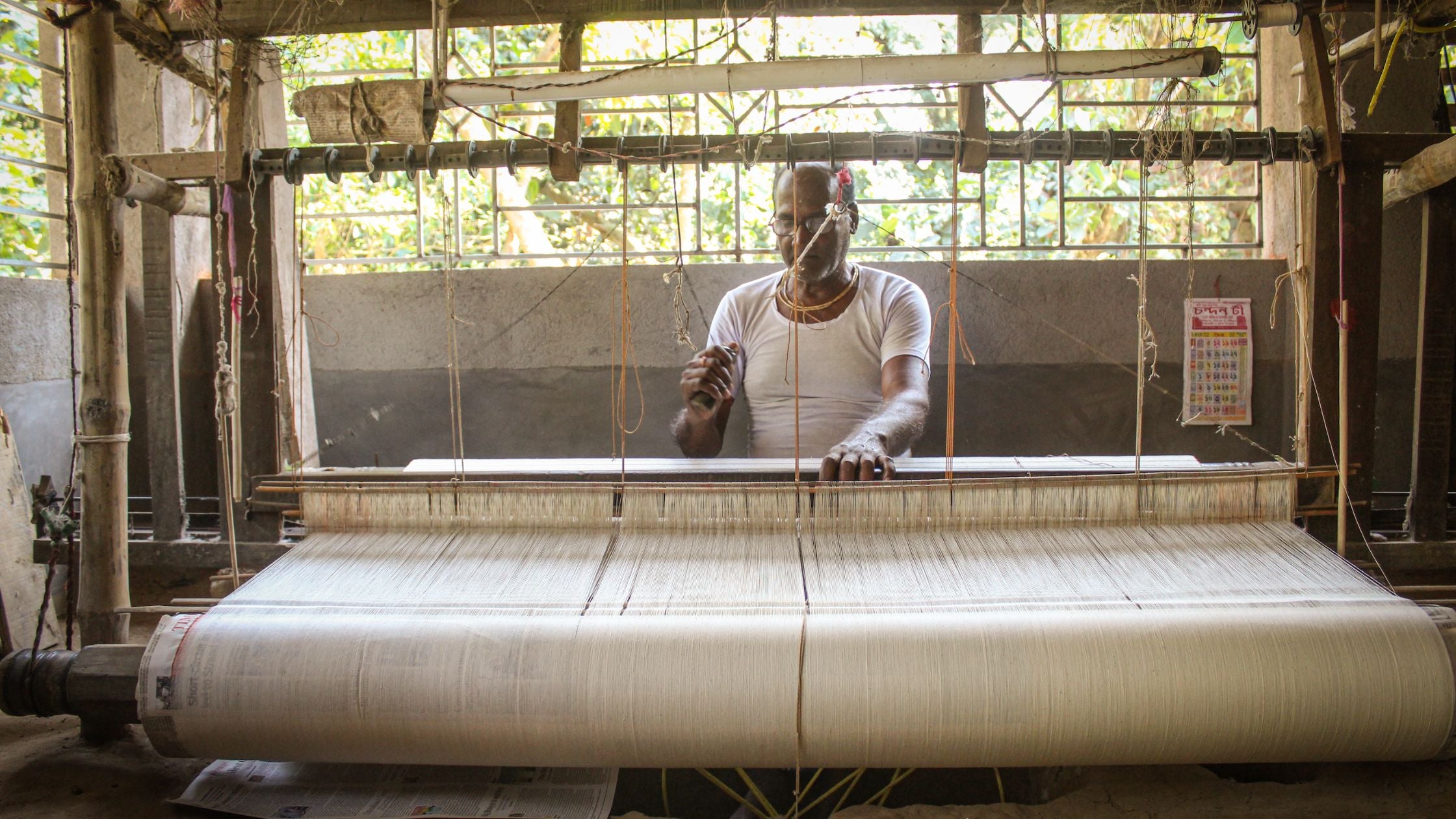India has kept its hand-made heritage alive and thriving for centuries, an artistic form that is almost ritualistic. Weaving combines the beauty of skill and culture as it is passed down and perfected through generations of artisans. It’s almost like a personalized signature, with every craftsman adding a part of their history and artistic ability to each piece they weave, carefully incorporating years of experience and talent into every thread of myriad fabrics.
Fabrics dating back to 5000 years ago, weaving in India was a way of living. Passing down the legacy and art was their remarkable way of showing respect and appreciation for this ancient skill.
Weaving clusters have existed in India for centuries, a group of geographically concentrated artisans producing similar handloom products, as taught to them by their families. They are all unique, with traditions of the locality pouring into their art and creating a distinctive form of handloom.
Weaving usually begins by sourcing raw materials. This includes the base of the fabric. To end with cloth, the raw material has to be converted to a yarn, which is done by carefully hand-rolling pieces of the fibers to create a long interlocked chain, which is then spun on a chakra (a spinning wheel) to make it finer.
In the dyeing process the yarn is soaked and dried over multiple days to achieve the desired shade. Our commitment to slow fashion ensures that we source chemical free, naturally dyed yarn for our fabric.The dyed yarn is converted into a thread-like form and wound on the bobbin neatly. Then, it is parallel warped, which helps establish the final length and breadth of the fabric.
In the final stage, the warp yarn is attached carefully through heddles and reed and onto the loom. Vertical and horizontal intercepts are repeated harmoniously until the fabric is woven entirely and is stimulated without the use of electricity. Fully powered by the motion of the feet on the foot pedals, the artisan and their loom are beautifully in sync with one another to produce a hand-woven piece of fabric. This process takes days, and long hours at a stretch, requiring immense physical and mental strength.
A process as complicated as hand-weaving is challenging to explain in a couple of words. The beauty of the craft is almost impossible to consolidate through language, which is why our way of appreciating it is by supporting artisans all over India through mindful and sustainable production. Their art deserves a space to shine, and we hope to acknowledge their immense talent and hard work through our carefully designed pieces at Sahana.






